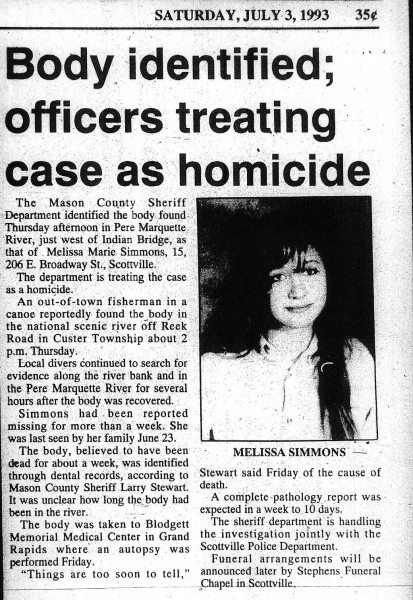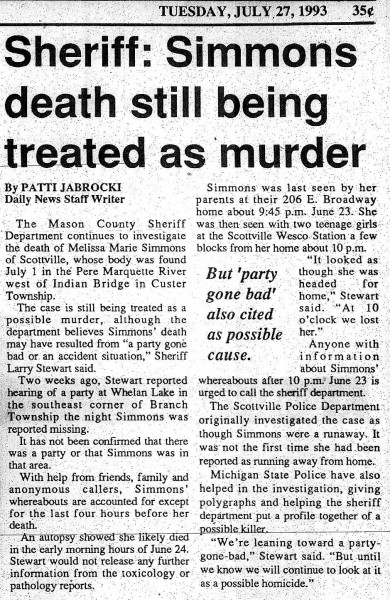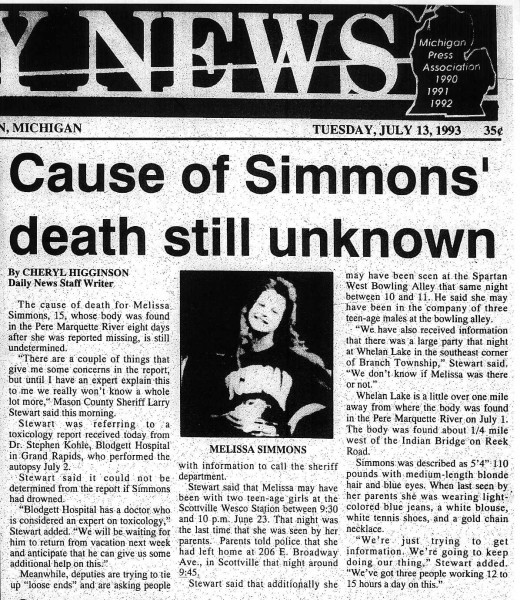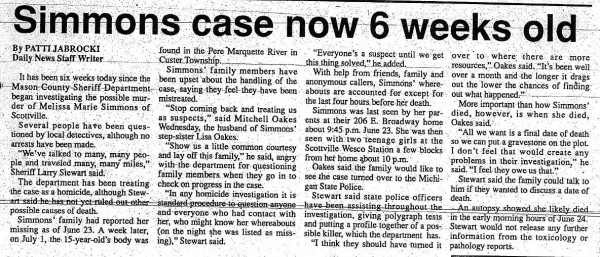March 27, 2012 — “Newsmakers” with Patrick Center March 30 (on Create) and April 1 on WGVU-TV
Last week I and First Lt. Cameron Henke of the Michigan State Police sat down with Patrick Center of WGVU to do his show Newsmakers. Â Lt. Henke is the officer in charge of the entire team — city, county, state — that is working full time to investigate the murder of Shannon Marie Siders. Â That young Newaygo woman was abducted July 18, 1989. That program is scheduled to be broadcast at 8:30 p.m., Friday night, March 30, on the Create Channel (136 in my Charter listings) at 10:30 a.m. Sunday morning, April 1, the day after what would have been her 41st birthday. Â (HD WGVU-TV is 785 on my Charter channel.)
We talked about the background of the investigation and the film in the half hour show. Â I had asked Patrick to invite Lt. Henke for a couple of reasons. The first was I didn’t want to be giving out what I might know of what the police are doing; that really was up to him what he wanted or was willing to reveal and to keep quite about what he thinks needs to be held close. Â Secondarily, I thought it might really be good for people to see somebody up the chain of command, somebody in addition to the rest of the cold case team who is completely committed to solving this crime. Â Does Lt. Cam Henke think his team will solve this? Â Watch and learn.
Our film, Into the Dark, will be broadcast on WGVU-TV the next day (night, really), midnight April 2.
I am very grateful to WGVU for seeing its way clear to carry the film. Â Let’s face it: a filmmaker without an outlet has an uphill battle all that way. Â …Not that you are a hobbyist, necessarily, but if your films have no place to shine they will not do much good in the here and now. Â (The ‘Later” is always another matter.)
The goal is to motivate the one person who know what the police need to know to make that call. Â I suppose it may seem off that in broadcasting this story we really are narrowcasting…send it out to the many in hopes of reaching one person or a small group. Â It’s a message within a message.
So, for our intended audience, here are two numbers: 517.241.3130 and 231.873.3584, extension 222. Â The first will link you to a dedicated tip line just for this case. Â The second will connect you to Det. Sgt. Scott Rios of the Michigan State Police. Â He heads up the cold case team.







